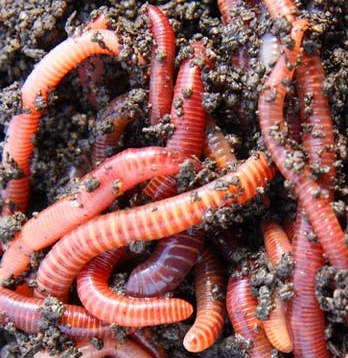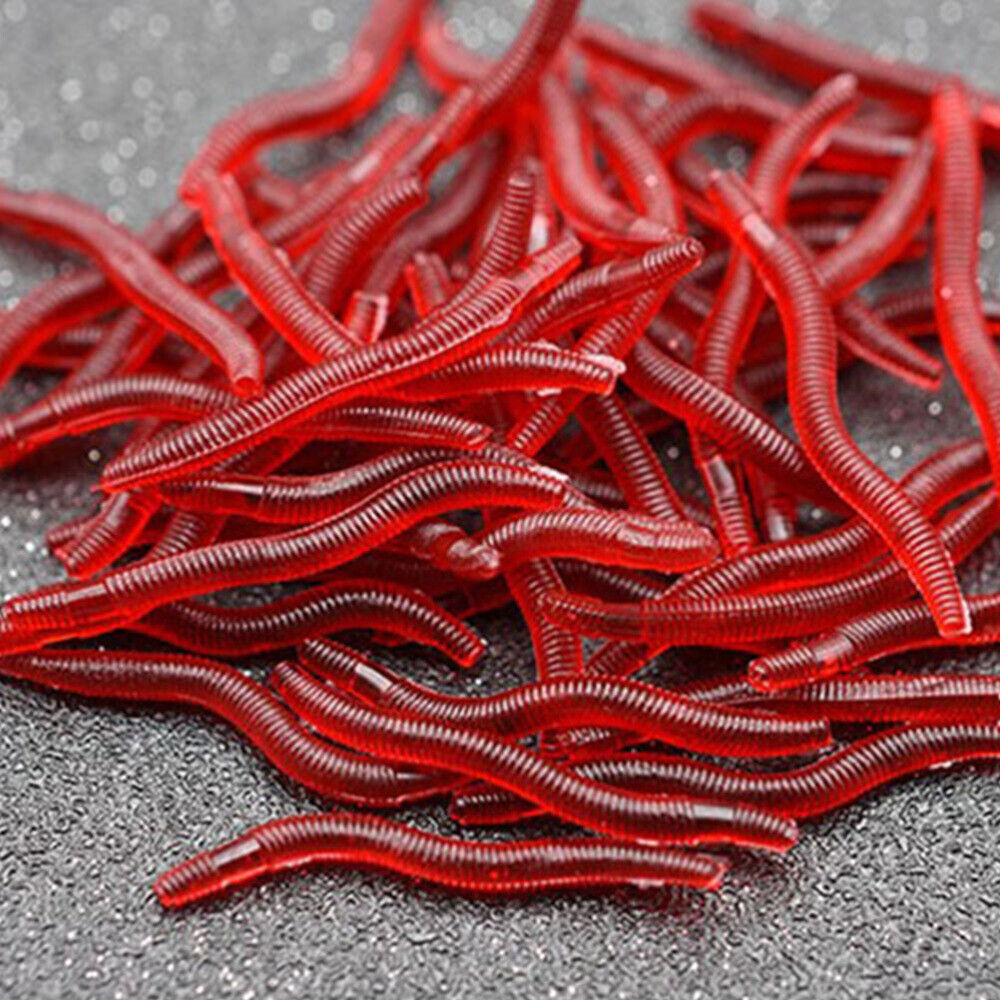The Duty of Red Wigglers in Lasting Gardening
The integration of red wigglers right into lasting gardening methods provides a compelling method to improving dirt health and wellness and decreasing natural waste. These microorganisms not only convert kitchen area scraps into nutrient-dense compost with vermicomposting but likewise aerate the soil, promoting ideal conditions for plant growth. As they break down complex organic materials, they actively cultivate a thriving microbial environment crucial for lasting farming. The ramifications of using red wigglers extend past plain composting; their duty in forming a much more sustainable future warrants a much deeper expedition of their benefits and practical applications.
Comprehending Red Wigglers
Red wigglers, scientifically recognized as Eisenia fetida, are a species of earthworm renowned for their role in sustainable horticulture and composting practices - red wigglers. These worms grow in disintegrating organic matter, making them particularly efficient in converting kitchen area scraps and yard waste right into nutrient-rich garden compost. Unlike conventional earthworms, red wigglers have a greater resistance for varying dampness levels and can grow in environments with plentiful natural material
(Lake James Worms)Classically, red wigglers are smaller sized than their earthworm equivalents, typically determining between 3 to 4 inches in size. They have a reddish-brown coloration and have a fractional body framework that helps in their burrowing and feeding activities. These organisms are hermaphroditic, meaning each specific has both male and female reproductive organs, which permits efficient population development under optimum conditions.
The habitat choices of red wigglers include moist, dark settings abundant in organic content, such as garden compost bins or worm ranches. Their environmental role expands beyond composting; they are indispensable in freshening the soil and facilitating vitamins and mineral cycling, which inevitably adds to healthier garden environments. red wigglers. Recognizing the biology and habits of red wigglers is essential for those seeking to execute effective vermicomposting in lasting gardening
Advantages of Vermicomposting
Vermicomposting offers countless advantages that boost sustainable horticulture practices and add to ecological health and wellness. Among the primary advantages is the transformation of natural waste right into nutrient-rich compost, which boosts dirt structure and fertility. The spreadings generated by red wigglers are packed with valuable bacteria and crucial nutrients, making them an exceptional all-natural plant food.
Additionally, vermicomposting substantially reduces garbage dump waste. By drawing away cooking area scraps and yard waste from garbage dumps, this technique not only decreases methane emissions-- a potent greenhouse gas-- however additionally advertises a circular economic climate, where waste is repurposed as a source.
One more benefit is the improvement of dirt oygenation and drainage (red wigglers). The burrowing activity of red wigglers creates channels in the soil, enabling air and water to penetrate more quickly, therefore cultivating a much healthier origin system for plants
Additionally, vermicomposting can be done on a little scale, making it obtainable for city garden enthusiasts and those with minimal room. This approach urges ecological stewardship and recognition, as people become more engaged with their waste management practices. Ultimately, vermicomposting stands for a lasting, effective, and environment-friendly strategy to horticulture that benefits both plants and the planet.
How to Start Vermicomposting
Beginning your very own vermicomposting system can be a satisfying venture that enhances your lasting gardening practices. To begin, pick an ideal container, such as a plastic container or wooden box, with excellent water drainage and air flow. The size will certainly depend upon the volume of kitchen scraps you create; a bin of 10-14 gallons usually is sufficient for a household.
Next, prepare the bedding product. Shredded newspaper, cardboard, and coconut coir are exceptional options, giving a comfy habitat for the red wigglers. Aim for a bed linen deepness of about 4-6 inches, which ought to be wet however not soaked.
As soon as the bed linen is established, present your worms. Red wigglers (Eisenia fetida) are the most suitable for composting. Start with around one extra pound of worms for every single 2-3 pounds of kitchen area scraps weekly.
Begin adding cooking area try here waste, staying clear of meat, milk, and oily foods, as these can attract pests and produce odors. Consistently monitor the container's wetness levels and temperature level, guaranteeing it continues to be within the perfect range for worm activity. With these initial steps, you'll be well on your way to creating nutrient-rich compost for your yard.
Keeping a Healthy Worm Container
A thriving worm bin needs regular care and focus to maintain an ideal atmosphere for the red wigglers. Trick factors to keep an eye on consist of dampness levels, temperature level, and food supply. Keeping a moisture level similar to a wrung-out sponge is critical; excessive water can cause anaerobic problems, while insufficient can dehydrate the worms.
Temperature is likewise important, as red wigglers thrive in a series of 55 to 77 levels Fahrenheit. Severe temperature levels can stress the worms, possibly causing death. Therefore, placing the bin in a climate-controlled area or using insulating materials can help regulate temperature fluctuations.

Lastly, oygenation is vital. On a regular basis turning the bed linens and using a fork or shovel can protect against compaction and promote air flow, making certain a healthy, successful setting for the red wigglers. By adhering to these methods, garden enthusiasts can maintain an efficient worm container that sustains sustainable gardening efforts.
Influence On Dirt Health
Enhancing soil health and wellness via the usage of red wigglers is a basic facet of lasting horticulture. By taking in organic matter, red wigglers break down complex materials into simpler substances, a procedure understood as vermicomposting.

(red wiggler worms)Researches have revealed that soils enriched with worm spreadings show raised microbial task and enhanced fertility, bring about higher plant yields. By including red wigglers right into gardening techniques, gardeners not only enhance their soil yet also add to a much more sustainable farming system, emphasizing the interconnectedness of soil wellness and ecological stewardship.

Final Thought
In verdict, red wigglers substantially contribute to sustainable horticulture with their efficient vermicomposting practices. By advertising waste reduction and fostering a round economic climate, red wigglers emerge as important components in green horticulture initiatives, highlighting their vital duty in environmental sustainability.